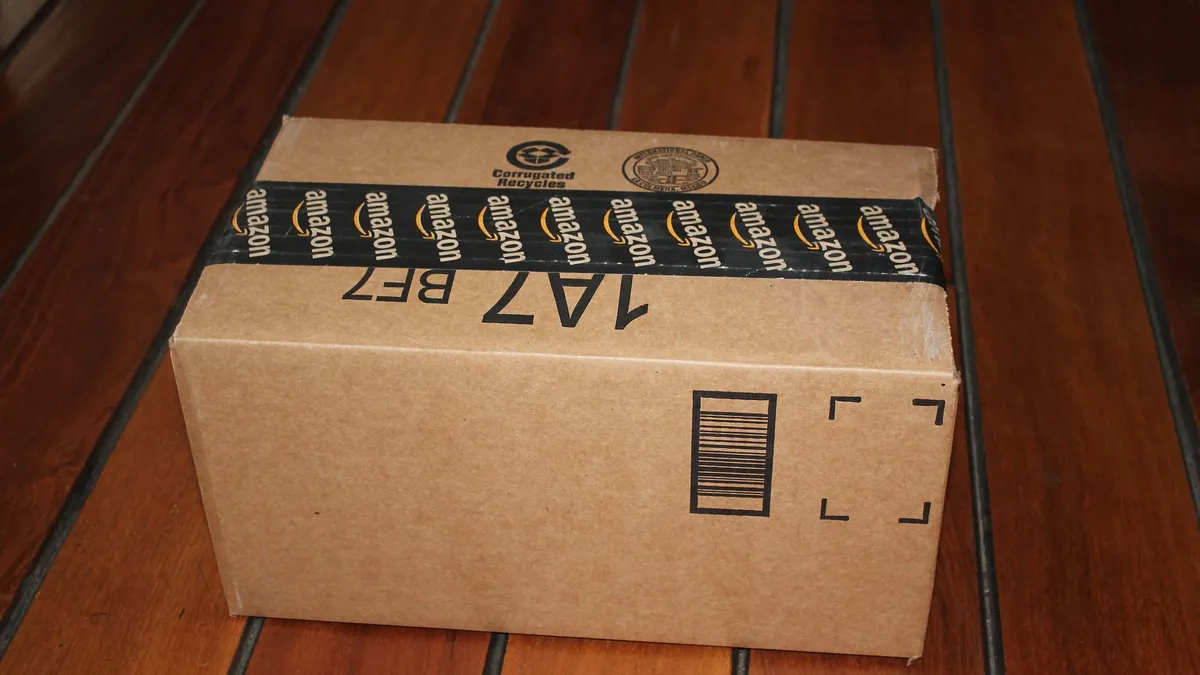Dive Brief:
- Counterfeit and pirated goods made up 3.3% of global trade volumes in 2016, totaling an estimated $509 billion, up from 2.5% in 2013, according to a report from the Organization for Economic Cooperation and Development (OECD).
- Footwear, clothing and leather goods topped the list of industries hit most by counterfeit products. In 2016, 22% of all customs seizures were for counterfeit footwear. Most of the fake goods originated in China or Hong Kong, OECD said.
- "Small parcels sent by post or express courier are a prime and growing conduit for counterfeit goods," the organization said. From 2014 to 2016, small parcels accounted for 69% of customs seizures, up from 63% from 2011 to 2013.
Dive Insight:
Counterfeits account for a relatively small percentage of global trade volumes, but the fact that they are traded at all and that the percentage is growing "very significantly," according to OECD, rings alarm bells for global supply chains.
Counterfeiters "tend to ship infringing products via complex routes," OECD said in its report. The goods likely go through several intermediary points that may falsify documents or repackage goods, creating a long paper trail that's difficult to follow to the point of origin. Fake goods from Asia often pass through Panama on their way to the U.S., according to OECD.
To truly crack down on counterfeits, each intermediary point would need strict customs checks to scan containers and parcels. The e-commerce boom has created greater circulation of small parcels, which can be more difficult for customs enforcement authorities to scan and screen. "Counterfeiters thrive where there is poor governance," OECD Public Governance Director Marcos Bonturi said in a statement.
It's not only up to regulators to attempt to stop counterfeits in their path, though.
Consumers shopping in online marketplaces, such as Amazon and Alibaba, cannot always easily discern whether the good they're ordering is genuine or not.
Amazon recently announced Project Zero, an initiative to crack down on counterfeits and keep them off its marketplace. A machine-learning-based tool scans for suspected counterfeits, and brands themselves can flag fake goods.
Retailers can also play a part by being vigilant about identifying counterfeit goods and notifying consumers if they may have purchased a fake.
Although footwear and apparel are most prolific in the counterfeit world, no industry is immune to the dangers of counterfeit goods.
"As long as a given product is protected with a trademark, patent, design right or copyright that adds economic value to its right holder, it is likely that this product suffers from counterfeiting and piracy," OECD said.
Counterfeit medical equipment accounted for 5% of customs seizures in 2016, and pharmaceuticals made up 2%. Counterfeits of such goods are not only damaging to manufacturers and the economy but could have life-threatening consequences for consumers of the products.















